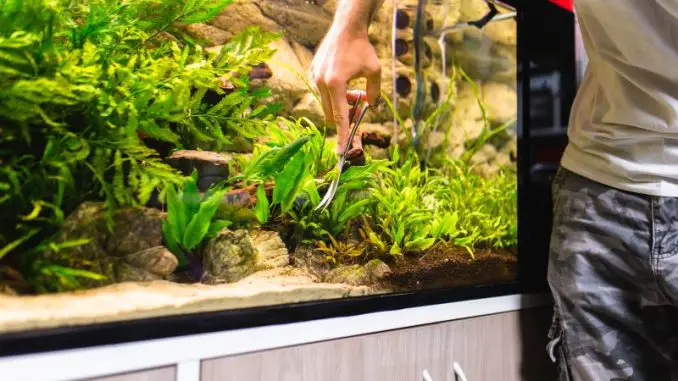
There are many beneficial reasons to use sand as your aquarium substrate. You will find it much easier to clean a sandy aquarium rather than one that contains gravel, as the sand doesn’t collect waste as easily. However, the first thing to consider when choosing a substrate is what fish are going to be living in your aquarium.
In nature, and is found in both saltwater and freshwater environments, so most fish will be familiar and feel comfortable with a sand substrate in the aquarium. Take the Cichlid species. For example, they are happiest in a sandy environment because they actually eat the microorganisms that live in the sand.
Doing your homework is crucial. Assuming all your fish will appreciate sand in their aquarium could be a risky and irresponsible mistake. There are fish that actually get very sick from a sandy substrate because it clogs them up.
There are also some fish that bury their eggs in the sand or burrow playfully in the substrate. This acts as a natural filtering system in the water which keeps the water clean and habitable.
Know Your Sand
There are actually a few types of sand on the market. Here is a bit of information about the main types of sand you can choose from.
Sand That Contains Bacteria
The best way to know if your sand contains marine bacteria is by looking at the bag. If the bag contains water, or the sand is delivered damp, then it has active bacteria living in it. You can purchase dry bacteria that have dormant bacteria waiting to be activated, but it can take a while to get the bacteria to a good state from scratch.
Sand That Alters PH
Specialty sand is sought out because it is PH neutral. Whenever you add something to your tank, you must always consider if it is going to alter the PH level in the water. Even a little piece of driftwood that you put in the tank for the show can cause all sorts of problems in an aquarium with PH fussy fish. Sand that will not alter the water in any way is a good option for those of you that require your tank to stay at a certain PH level.
Other sand, such as those made of crushed coral is specifically made to change the PH levels and chemistry in the water. You can get crushed coral sand that dissolves in the water until the water reaches a PH of 7.4. Once the optimal PH level is reached, the coral stops dissolving.
Play Sand
Play sand isn’t toxic and is probably the safest option to go for. It is considered the ‘standard’ sand for aquariums, not showy and not plain. Keep in mind that it is a pain to clean. So if you hate cleaning your aquarium, this sand will make the job even harder.
Pool Sand
This is a bright, white, in-your-face sand. It looks very snazzy and ‘high class’. If you don’t clean it regularly this glorious bright white sand will turn yellow and grubby.
Clay Sand
Ok, so you can’t actually make sand out of clay. However, clay is mixed in with the sand to boost the nutrients in the substrate. This benefits fish that need a boost in minerals in the water to mimic their natural habitat.
Artificial Sand
Be very wary of artificial sand. It can be poisonous to your fish and make them very sick. The artificial dyes used on ‘fake’ sand dissolve over time into the water and contaminate the water with harmful chemicals.
This is the worst sand to use in your fish aquarium. If you really cannot resist artificial sand because of its aesthetic appeal, then you can get away with it in a planted, fishless aquarium.
We did some research for you and here are the 10 best aquarium sand for you to compare and choose:
Comparison Table
| PRODUCT | FEATURES | LATEST PRICE |
|---|---|---|
1. CaribSea Super Natural Aquarium Sand |
| Check Price |
2. SeaChem Flourite Black Sand |
| Check Price |
3. Imagitarium White Aquarium Sand |
| Check Price |
4. Royal Ram Natural White Sand |
| Check Price |
5. CaribSea Arag-Alive Special Bahamas Reef Sand |
| Check Price |
6. Stoney River White Aquarium Sand |
| Check Price |
7. CaribSea Natural Moonlight Sand |
| Check Price |
8. CaribSea Arag-Alive Fiji Pink Sand |
| Check Price |
9. WorldWide Imports Aqua Terra Sand in Natural Tan |
| Check Price |
10. Nature’s Ocean Samoa Pink Sand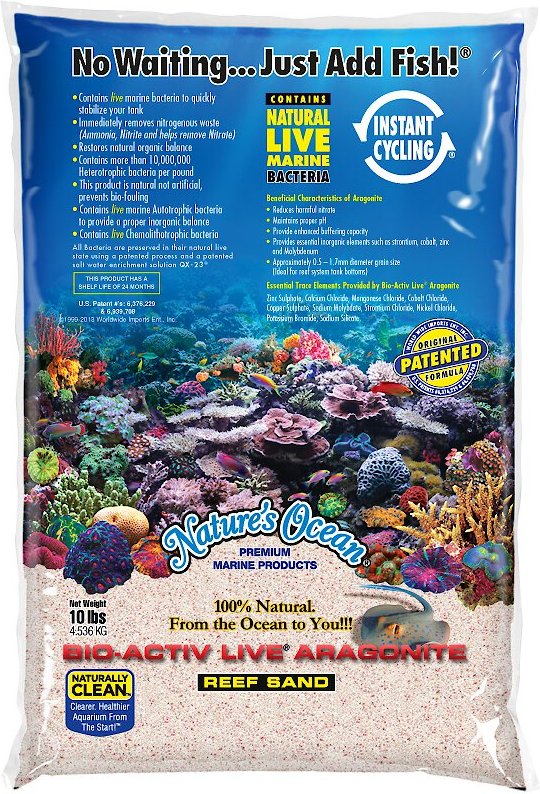 |
| Check Price |
Our Best Aquarium Sand Reviews and Comparisons
1. CaribSea Super Natural Aquarium Sand

Product Highlights
The CaribSea Super Natural aquarium sand is one of the softest sand grains available. You would want to consider this sand if you have soft-bellied fish or turtles in your aquarium.
Features
- Creates a natural, sea-like environment in your aquarium
- No paint or dyes
- Safe for all aquariums
- Neutral PH level
What We Like About CaribSea Super Natural Aquarium Sand
The sand has a beautiful natural color it. If you have a plant aquarium that doesn’t contain fish yet, you can pour the sand straight into the aquarium without rinsing or washing it first. You also won’t have to clean the substrate out as often when you use this sand.
Great for bottom dwellers or other fish that are sensitive to sharp substrates as its grains are super fine and soft. One bag of this sand is more than enough to fill a 60-gallon tank.
What We Don’t Like About CaribSea Super Natural Aquarium Sand
If your aquarium does not have fish or shrimps that move the sand around regularly, the sand will discolor and turn a brownish color within weeks or even days. If the sand is not thoroughly washed before putting it in the aquarium, it will leave the tank cloudy for a couple of days.
Mixing this sand up with gravel or other substrates the sand may discolor as the fish won’t be able to move through and filter the dirt out of the sand. And yet lots of movement in the aquarium will make the water murky as the sand is so fine, so you can’t really win.
PROS
- Soft, fine sand
- PH neutral
- Delicate fish love this sand
- Low maintenance
CONS
- Movement makes the water murky
- Discolors quickly
2. SeaChem Flourite Black Sand

Product Highlights
Freshwater and planted aquariums are best suited to this sand. The sand is made of soft clay gravel that is finely crushed up. Best to use this sand alone and not mixed with other substrates.
Features
- Does not change the waters PH level
- Does not need to be replaced after a certain period of time
- Made of porous clay
- Easy to use
What We Like About SeaChem Flourite Black Sand
It is beautiful charcoal, dark gray color. Prevents the fast build-up of detritus on the bottom of the aquarium. As long as you have sand sifters or bottom-dwelling fish in the aquarium, the color won’t change much.
Plants tend to grow really quickly in this sand and are a great option for aquariums that require gravel, as this is made of the same material, just in sand form.
What We Don’t Like About SeaChem Flourite Black Sand
This sand takes a lot of time to clean, if you are not careful when you put it in the tank and fill the water, you will be left with dirty water that you can not see through for weeks.
Planting new plants in the aquarium is a bit tricky with this sand as they struggle to stay rooted. It is not black like advertised in the picture which is a shame.
PROS
- Good alternative for gravel
- Prevents detritus build up
- PH neutral
- Porous
CONS
- Hard to clean
- Hard to plant new plants in
3. Imagitarium White Aquarium Sand

Product Highlights
The Imagitarium sand is so bright and vibrant, it makes your plants and fish look even more colorful and lively.
Features
- Mimics a natural environment
- Natural bacterial found in this sand helps break down any waste in the water
- Reduces unhealthy debris in the water
- Beautiful white color</li
What We Like About Imagitarium White Aquarium Sand
If your tank has a good filter, the initial cloudiness clears up within a day or so. The sand is heavy enough not to float about in the aquarium and clog up filter systems. It is also really easy to plant plants in the sand.
Suitable for larger tanks that require a more heavy-duty substrate and for anyone that wants sand that comes pre-washed, saving you a lot of time and energy.
What We Don’t Like About Imagitarium White Aquarium Sand
The sand is coarse and unsuitable for delicate fish that like to burrow in the sand. It feels very artificial and is nothing like what real beach sand looks or feels like. Do not put it in a tank with shrimp or snails as it is completely incompatible for invertebrates.
The sand is very chalky and rock-like and bits and pieces float to the top that must be disposed of. Anyone that doesn’t have a sufficient water filter should wash the sand before use, even though it is pre-washed.
PROS
- Heavy
- Suitable for large tanks
- Cloudiness clears quickly
- Pre-washed
CONS
- Not suitable for invertebrates
- Grains of sand are large and ridged
4. Royal Ram Natural White Sand

Product Highlights
A completely natural sand that will sparkle beautifully in your aquarium. Use it for decoration in or out of an aquarium.
Features
- 100% natural white marble sand
- Suited for water, lizard and snake aquariums
What We Like About Royal Ram Natural White Sand
You can use it for arts and crafts projects, as well as for land animals such as for lizard and snake tanks. The sand is very clean and pure, looks beautiful in an aquarium and doesn’t require much maintenance.
What We Don’t Like About Royal Ram Natural White Sand
One bag is only about 3 cups of sand, so you will need a few bags of the stuff to fill a 10-gallon aquarium. It needs to be washed multiple times for use in a fish aquarium, which is rather time-consuming.
Top Tip: It should be mixed with other substrates, rather than being used alone if you choose this sand for your aquarium.
PROS
- Looks attractive
- 100% natural sand
- Multi functional
- Doesn’ interfere with the PH of the water
CONS
- More suitable for arts and crafts than for aquariums
- Should be used with other substrates
5. CaribSea Arag-Alive Special Bahamas Reef Sand

Product Highlights
If you have algae issues in your aquarium then this sand is best for your marine aquarium. It maintains the perfect PH for your aquarium without the need for chemical assistance.
Features
- Suitable for most marine aquariums
- Recreates a natural environment
- Contains millions of good marine bacteria
- Enhances biological filtration
What We Like About CaribSea Arag-Alive Special Bahamas Reef Sand
It is a beautiful color and is extremely fine in texture. Snails and other invertebrates live happily in the tank with this sand. The sand settles quickly after fish and other creatures are done digging about in it and don’t make the water dirty looking in a high flow tank.
What We Don’t Like About CaribSea Arag-Alive Special Bahamas Reef Sand
If the sand smells ‘off’ then wash it properly to avoid an ammonia spike in your tank. The sand will take days to settle if you do not have the appropriate filter system in place to clean the water.
Please Note: The bag comes with water in it, therefore, keep in mind that the amount of sand you get is less than the kilos advertised on the packaging.
PROS
- Contains natural bacteria
- Relatively clean
- Soft enough for delicate fish
- Enhances biological filtration
CONS
- Takes days to settle
- Package contains water
6. Stoney River White Aquarium Sand

Product Highlights
Use this sand in freshwater aquariums only.
Features
- Doesn’t effect the PH level of the water
- Non-toxic coating
- Suitable for freshwater aquariums
- 5 pounds of sand per bag
What We Like About Stoney River White Aquarium Sand
The vacuum doesn’t suck up all the sand during water changes. Sometimes air pockets found in the sand can be dangerous as they build up to toxic gases. This sand, however, is coarse enough to prevent this from happening.
The sand is an appealing natural off-white color and comes with instructions on how to wash the sand to prevent any cloudiness before putting it in the aquarium.
What We Don’t Like About Stoney River White Aquarium Sand
The polymer coating is unnecessary and should be avoided if possible in freshwater and saltwater aquariums. There will always be a significant amount of sand that floats to the top even after washing because it is so lightweight. The sand is made out of silica and develops a gel film on top. The sand sticks and lumps together.
PROS
- Vacuum friendly
- Lovely color
- Comes with instructions
- Doesn’t create air pockets
CONS
- Silica sand, not natural sand
- Develops a gel coating
7. CaribSea Natural Moonlight Sand

Product Highlights
You can use this sand in both freshwater and saltwater aquariums. The sand is collected all over the world like the Rio Negro and Sri Lanka and contains a mixture of natural minerals.
Features
- Natural white color
- PH neutral
- Dye free
- Paint free
What We Like About CaribSea Natural Moonlight Sand
It is as close to white sand as you could possibly get. Plants are compatible with this sand, in fact, the sand holds plants in place during water changes, so you won’t find yourself replanting your plants afterward anymore. It’s really soft and will not damage bottom dwellers and other similarly fragile fish.
What We Don’t Like About CaribSea Natural Moonlight Sand
When lights are on bright, you will notice a constant white haze in the water because of the sand. If you have an aquarium that requires a high current flow then this is not for you. A high flow will unsettle the sand constantly making the water even murkier.
Top Tip: You have got to make sure your filter is appropriate for fine sand before using this sand if not the filter will be ruined.
PROS
- Soft and fine
- Settles down quickly
- Easy to plant
- Very white and crisp
CONS
- Ruins water filters
- Leaves water murky
8. CaribSea Arag-Alive Fiji Pink Sand

Product Highlights
This sand is full of natural bacteria and comes all the way from the shores of Fiji.
Features
- Suitable for all types of aquariums
- Enhances biological filtration
- Contains natural bacteria
- Beige/pink in color
What We Like About CaribSea Arag-Alive Fiji Pink Sand
The grains are similar to the size of the grains of sand found at the beach. Sand sifters can move the sand about in their mouth nicely, not too big and not too fine for them to do their job. Snails, crabs, shrimps, and worms love this sand too.
What We Don’t Like About CaribSea Arag-Alive Fiji Pink Sand
The color isn’t pink at all and looks like regular sand. It will even turn black if you do not have in the aquarium any sand sifting or burrowing fish to move it about.
The product description says special grade sand, however, the grains are more of a standard size.
PROS
- Perfect size for sand sifters
- Delicate enough for snails and worms
- Acts as a natural filter
- Contains natural, healthy bacteria
CONS
- Isn’t actually pink
- Discolors quickly
9. WorldWide Imports Aqua Terra Sand in Natural Tan

Product Highlights
Use this sand in saltwater and freshwater aquariums, ponds, terrariums, gardens, potted plants, and many much more.
Features
- Natural coated sand
- Made of gravel and sand
- Has a 100% acrylic coating
- Colorfast
- Non-toxic
- Natural tan color
What We Like About WorldWide Imports Aqua Terra Sand in Natural Tan
One small bag will go a long way, you can fill up 3 nano aquariums with one small bag. The color is natural looking and has a very soft look to it, compared to bleached white looking sand.
What We Don’t Like About WorldWide Imports Aqua Terra Sand in Natural Tan
The grains are small and light, therefore, they will float to the surface when disturbed. Not suitable for a refugium as the movement of the water will unsettle the sand constantly.
Top Tip: Be super careful during water changes not to damage any fish or plants.
PROS
- Isn’t cloudy
- 5 lbs of sand goes a long way
- Natural color
CONS
- Coated in acrylic
- Grains float to the surface
10. Nature’s Ocean Samoa Pink Sand

Product Highlights
Clownfish and other reef loving fish will thrive in an environment with Samoa pink sand, which comes straight from the ocean floor.
Features
- Does not affect PH level
- Is delivered dry
- High surface area
- Increases carbonate hardness
- Reduces nitrates
- Sterilized
- 100% from the ocean
What We Like About Nature’s Ocean Samoa Pink Sand
Shines and sparkles soft pink under the aquarium lights. Better yet it’s completely natural and integrates well in an already functioning tank, especially in tanks with fish that do not move the sand about too much. Plus a 10-pound bag of sand is more than enough for a 10-gallon aquarium.
What We Don’t Like About Nature’s Ocean Samoa Pink Sand
The image shows larger and brighter chunks of pink amongst the fine grains of sand, however, it doesn’t actually look like this on arrival. Disappointingly the sand is too rough for delicate fish and bottom dwellers and sand burying fish may not like this too much.
Top Tip: Corals are great on this sand, plants however will not thrive.
PROS
- Beautify soft pink color
- Can be mixed with other sand types
- PH of the water stays constant
- 100% natural
CONS
- Grains are finer than advertised
- It is sent dry
Final Verdict
The CaribSea Special Grade Arag-Alive Reef Sand is our winner this time. It is soft enough for delicate fish to live happily and comfortably in a tank with this sand. It helps to control algae build up in the tank which is usually especially hard to control if you have a big tank.
The natural bacteria are already living in the sand on arrival, so you don’t have to do anything to prepare the sand before placing it in the tank. All in all, it is the most versatile sand out of the 10 we have just looked at and can be integrated into almost any aquarium.
What Sand Should You Choose For Your Tank?
Not all sands are appropriate for freshwater aquariums just like certain types of sand are harmful in a saltwater aquarium. So regardless of how wonderful the packet of sand that you are eyeing up may appear, it is completely useless to you if it is intended for freshwater aquariums and you have a saltwater tank at home. Here are some other things to consider when you are shopping for your sand.
Size of the Grains
Your fish may hold the answer to what size grains you should shop for. If your fish is a sand sifting fish they will have a very particular sized grain that they like. Take Gobies, for example, they chew on the sand and spit it back out again. This cleans your substrate without you needing to do a thing, and gobies get to feed on the delicious debris and algae that form between the grains. Win, win if you ask me.
Bacteria and PH Levels
As we mentioned earlier, there is sand that can change the chemicals in the water. Buying sand that is packed with beneficial bacteria is especially helpful for those of you with ‘messy’ fish. Goldfish are super messy but on top of that, they are really, really fussy about the quality of their water.
Goldfish like their water crystal clear and the only way to do that is by performing weekly partial water changes and with a lot of help from the beneficial bacteria that live in the water. So, choosing sand that already has millions of beneficial bacteria will help break down all that waste the Goldfish make.
Fun Fact About Goldfish: Goldfish are a genetically mutated species of fish. In the wild, their color dulls down completely after just a few generations living in the wild.
Show Stopping Sand
Do you want glow-in-the-dark sand? Or maybe bright pink or blue sand? There is a world of magical designs and quirky features that you never would imagine seeing out in the wild. If you want to create a unique aquarium that is a real show stopper, using colored sand is a great way of doing it.
Fish That Prefer Sand Substrate
You might want to choose your fish based on the substrate you like, and not the other way around. After all, it is you that is going to be cleaning the aquarium and keeping it in tip-top condition. So it makes perfect sense for you to choose what goes into the tank.
The majority of fish thrive best with a sand substrate in their tank. There are some fish that benefit from a sandy substrate far more than others, like bottom-dwelling fish. Bottom dwellers are marine animals that eat and congregate at the bottom of the ocean or your fish tank. These are the most useful fish in aquariums with a sandy substrate as they will keep the sand clean and bright.
Here is some information on the best bottom dwellers to have in your aquarium:
Shrimp
If you want a low maintenance clean tank, get yourself some shrimp! They very rarely move up to the top of the water, they spend all of their days scavenging for algae and debris at the bottom of the tank. If you choose to place light or white sand in your aquarium then the sand will need to be turned and cleaned frequently in order for it not to discolor. Shrimp do the hard work for you and get into every nook and cranny.
One thing to be mindful of is if you have any big fish in your tank. Large fish will eat your shrimp, so keep them in a tank with little fish to stay on the safe side.
Corydoras
Corydoras are really easy going fish, they like to live in large groups so having about 7 o 8 in your tank is best. They don’t start fights with other species of fish in the tank and are very friendly and timid. They will spend most of their day huddled in a group and rustling through the sand.
Plecos
Think about how big you want your fish to be, some species of Plecos grow to over 6 inches long so don’t cram them into a tiny aquarium. They will need a 30-gallon tank or even bigger to thrive. If you keep them happy, they will live for 10-15 years and they make great companions.
Their job is to suck up algae wherever they find it. Perfect for cleaning up your sandy tank. Although they won’t cause any trouble with other fish species, they will get in a fight or two if a fish steals their favorite hiding spot.
Guppies
Guppies are the most vibrant bottom dwellers, in my opinion. The male guppies are flamboyant and shake their gorgeous colorful tail all over the tank. Be warned, overfeeding your guppies will stop them from sifting through the sand at the bottom of the tank.
Maintaining the Sand In Your Aquarium
By now, your mind is probably pretty set on having sand in your aquarium. Using bottom-dwelling fish is not always enough to keep the sand looking brand new. Cleaning the sand in your aquarium isn’t as hard as it sounds. We have put together a simple ‘how-to’ to make your life a little bit easier.
What sand is in your tank? It is important to know which sand you are dealing with. Not every sand can be cleaned the same way. Incorrect sand maintenance can actually make a big old mess in your aquarium.
- 1. Turn off all the heating and filtering systems. This is just a safety precaution.
- 2. Have you any driftwood or accessories in your tank? Now is the time to take them out of the tank and wash them separately.
- 3. Do not forget to wash the accessories before putting them back into your clean tank.
- 4. Complete a partial water change: remove about 20% of the water and replace it with new, clean water.
- 5. Put your hand in the tank and use your fingers to gently upturn all the sand at the bottom of the tank.
- 6. Go over the sand with a siphon. You will need to keep the siphon ½ inch above the sand and swirl the siphon back and forth until you are satisfied the sand is clean.
- 7. If you have lost a lot of sand, you can replace it once you have finished cleaning. It is always good to top up the tank with fresh, clean sand now and then.
Q&A: Everything You Need To Know About Aquarium Sand
Q: How long will the new sand in my aquarium take to settle?
A: Your sand could take up to a week to settle if you didn’t put it in the tank with care. You should wash sand until the water runs clear before putting it in the aquarium. If you wash it well and have a good filtering system in place, the sand will settle within a day.
Q: How much sand will I need?
A: You want to have about 2 inches of sand substrate in your tank. That is the standard. To achieve this you will need 1 pound of sand for every gallon of water in your tank. If you like a thicker substrate then the measurements will be different.
Q: Is aquarium sand similar to ocean sand?
A: Yes and no. You can get artificial sand that is either partially or completely synthetic. This is obviously not the same material you will find out in the sea. There is certain sand that is exactly like the sand found out in the wild. Crushed coral sand, for example, is made of crushed corals and is perfect for reef aquariums.
Q: How many types of aquarium substrates are there?
A: There are many different substrates. We have already spoken about at least 6 different types of sand. So you can only imagine how many are out there.
Substrates are broken down into categories: sand, gravel, and aqua soil. Choose your substrate with care. Making the wrong decision could result in your plants not rooting, fish not breeding, or worse, your fish getting sick and dying.
Q: What is the best aquarium substrate?
A: All substrates have pros and cons to consider carefully before making your decision. Now that you know all there is to know about sand, here is a little bit of information about aqua soil and gravel so that you can make a comparison.
Aqua Soil
Aqua Soil is mainly used in plant aquariums. It releases carbon dioxide into the water which helps aquarium plants photosynthesize. Plants can root in aqua soil far easier than in other substrates. Having live plants in your aquarium will make certain species of fish very happy!
Gravel
Gravel is really heavy and won’t make the water look dirty or float to the surface. Most importantly, it won’t clog up your filter system.


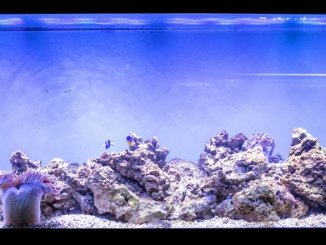
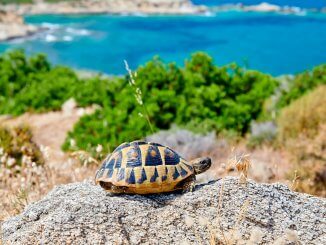
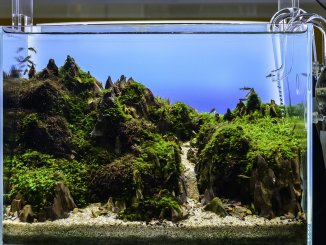
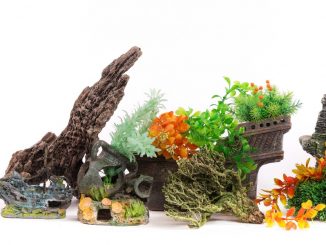
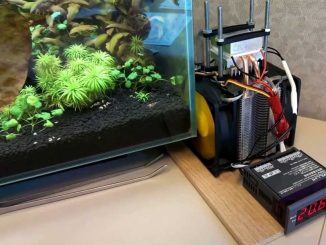
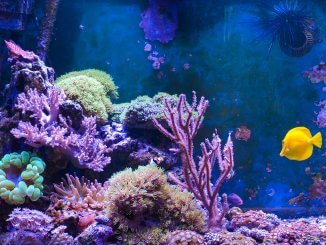

Looking for bright pink aquarium sand very small grain.fresh water
Is a 5 pound bag of Carib sea natural enough for a 5-gallon tank? I just got a 5 gal fluval spec.
Thank you, very informative. I have a question: Can you use aqua soil, gravel,sand and glo gravel all in one 55 gallon aquarium? Please tell me which is the best freshwater sand to use in a community tank. Larger fish like pearl gourami, etc.